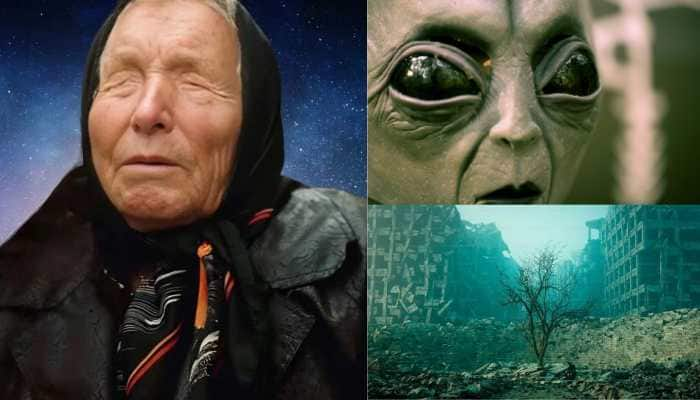NASA's Hubble captures distant galaxies as asteroids photobomb them - See pics
Asteroid trails can be seen across the image as curved or S-shaped streaks. Instead of appearing as one long trail, appear in multiple Hubble exposures that have been combined into one image.
Trending Photos
) Image courtesy: NASA, ESA, and B. Sunnquist and J. Mack (STScI)
Image courtesy: NASA, ESA, and B. Sunnquist and J. Mack (STScI) New Delhi: It's not just us humans who like to photobomb others for fun – it's asteroids too! Two Hubble images were released by NASA, which shows how some of our solar system's asteroids have photobombed deep images of the universe.
These asteroids reside, on average, only about 160 million miles from Earth – right around the corner in astronomical terms. Yet, they've elbowed their way into this picture of thousands of galaxies scattered across space and time at inconceivably farther distances.
The first image is of a random patch of sky, which is a part of a survey called Frontier Fields. Thousands of galaxies are on display, including massive yellowish ellipticals and majestic blue spirals. Much smaller, fragmentary blue galaxies are sprinkled throughout the field.

According to NASA, the reddest objects are most likely the farthest galaxies, whose light has been stretched into the red part of the spectrum by the expansion of space.
Asteroid trails can be seen across the image as curved or S-shaped streaks. Instead of appearing as one long trail, appear in multiple Hubble exposures that have been combined into one image.
Of the 20 total asteroid sightings for this field, seven are unique objects. Of these seven asteroids, only two were earlier identified. The others were too faint to be seen previously, NASA said.
Due to an observational effect called parallax, the trails look curved. As Hubble orbits around Earth, an asteroid will appear to move along an arc with respect to the vastly more distant background stars and galaxies.
The second image is of the parallel field for the galaxy cluster Abell 370. According to NASA, it was assembled from images taken in visible and infrared light.

The field's position on the sky is near the ecliptic, the plane of our solar system. This is the zone in which most asteroids reside, which is why Hubble astronomers saw so many crossings.
Hubble deep-sky observations taken along a line-of-sight near the plane of our solar system commonly record asteroid trails.
Playing the role of scientists' 'third eye in the sky' effortlessly, NASA's Hubble Space Telescope has given astronomers hope of discovering evolutionary secrets of the universe.
In the past, Hubble has helped unearth massive revelations, most of which have turned out to be breakthroughs in the world of space.
Helping scientists reach out into the depths of the universe and discover numerous things that would have otherwise, been impossible, the project of international cooperation between NASA and ESA (European Space Agency) has been highly dependable.
Stay informed on all the latest news, real-time breaking news updates, and follow all the important headlines in india news and world News on Zee News.
Live Tv







)
)
)
)
)
)
)
)
)
)
